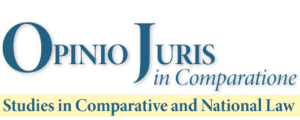Bereavement damages in the EU: Italian lessons in a comparative perspective
Authors: Andrea Parziale
ABSTRACT
Background. Compensating non-pecuniary damages can be challenging, as non-economic losses, including bereavement damages, are difficult to quantify in monetary terms. This may lead to unfair outcomes and inefficiencies. Such concerns persist in the literature despite adjudicators’ increasing use of guidelines to promote consistency and predictability of damage awards.
Aim. This article aims to provide general indications to lawmakers and adjudicators considering setting up or improving their national frameworks for compensating bereavement damages. The focus is on balancing treating all secondary victims equally and providing personalised compensation based on individual circumstances.
Methodology. To this end, the article reviews the lessons that can be drawn from the recent reform of the Italian system for compensating bereavement damages. The article also comparatively discusses the approaches adopted in other European legal systems that have established formal guidelines for compensating bereavement damages in light of horizontal and vertical equity principles.
Results and conclusions. Among the different approaches to the compensation of bereavement damages that have emerged in several European legal systems, particularly promising seem the approaches that prioritise standardisation, with uniform monetary values accompanied by a closed list of objective and easily assessable personalising factors. This approach can foster horizontal equity and efficiency while ensuring satisfactory personalisation, provided sufficient personalising factors are foreseen.
Keywords: Civil liability – Non-pecuniary damages – Bereavement damages – Standardisation – Comparative law

